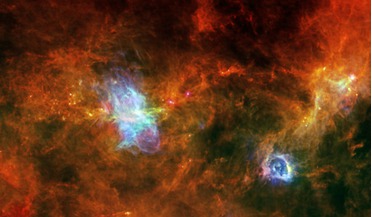 November 2018
Being human in space
November 2018
Being human in space
... cosmic art project ‘Music of the Spheres’. Concept from Dutch scientists and engineers for a resilient interstellar space vehicle constructed from a hollowed-out asteroid. Purposeful dissociation In cognitive-behavioural therapy there is a technique...
 April 2020
Plasma Clipper - opening the age of sail, in space travel
April 2020
Plasma Clipper - opening the age of sail, in space travel
...the early 1970s in his discussion on the Ram-Augmented Interstellar Rocket; a craft where the reaction mass is carried ... developing advanced propulsion technologies for solar system and interstellar missions. He has been active in the development ...
 July 2020
Life in the universe – common or not?
July 2020
Life in the universe – common or not?
... is that they have the same origin as us (i.e., born by the same abiogenesis event), and they (or we) traversed interstellar space on meteorites. The second possibility is that they originate from a different abiogenesis event, and in this case ...
 November 2025
Extra-terrestrial Skyring: managing space debris with an artificial planetary ring
November 2025
Extra-terrestrial Skyring: managing space debris with an artificial planetary ring
... and beyond. About the author Dr Kelvin F Long is an aerospace engineer, physicist and interstellar studies advocate. He is the founder of the Interstellar Research Centre and serves as Managing Director of Stellar Engines Ltd. With a background...
 15 June 2016
Scientists discover a chiral molecule outside of our solar system for the first time
15 June 2016
Scientists discover a chiral molecule outside of our solar system for the first time
... primarily using the National Science Foundation's Green Bank Telescope (GBT) in West Virginia as part of the Prebiotic Interstellar Molecular Survey, this puzzle is one step closer to being solved. “It's the first molecule detected in space that...
 29 August 2016
Dust is the key to producing complex organic molecules in space
29 August 2016
Dust is the key to producing complex organic molecules in space
...the simplest sugar alcohol, have both been detected in the interstellar medium (ISM); but how did they get there? Did... or were they produced via reactions on the surface of interstellar dust grains? Using the Green Bank Telescope, the IRAM 30m...